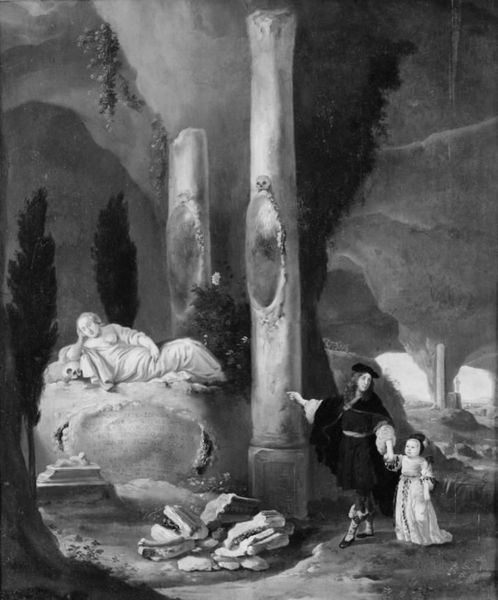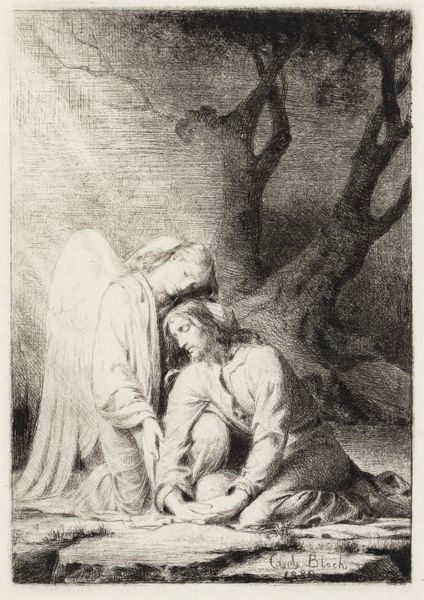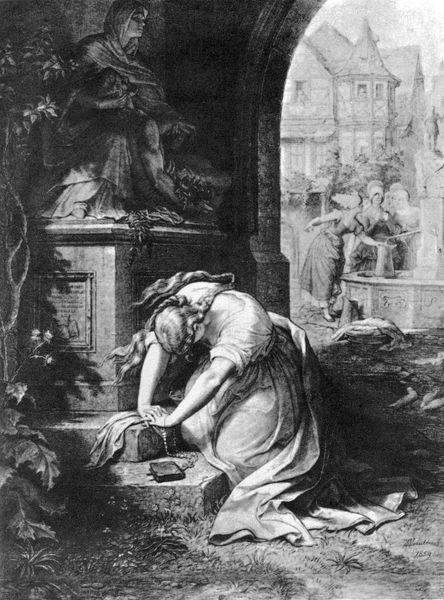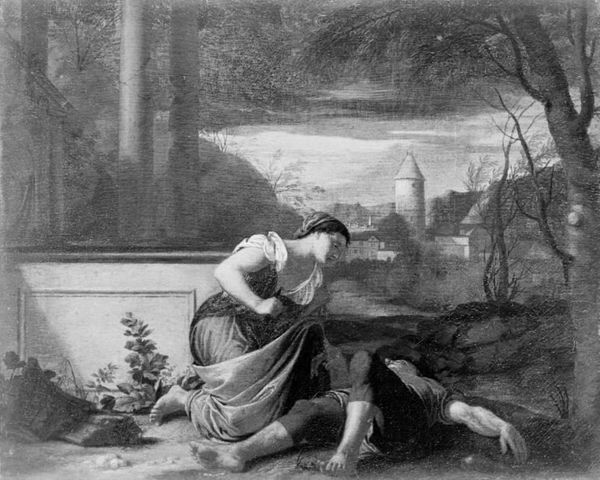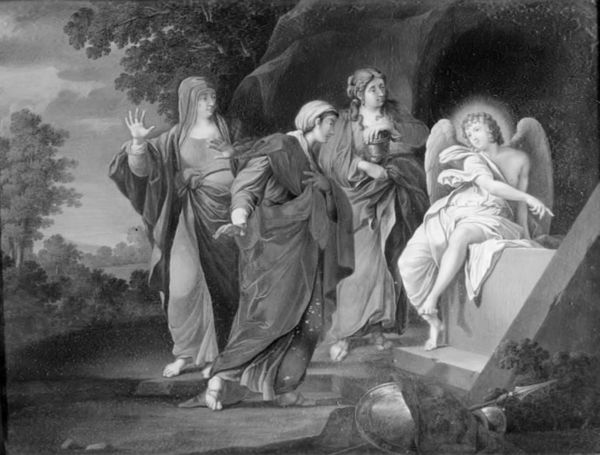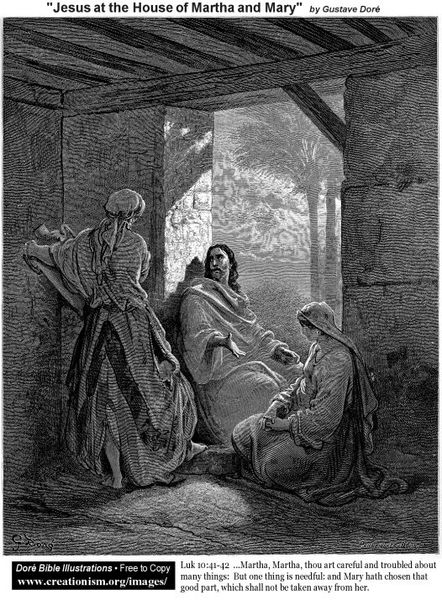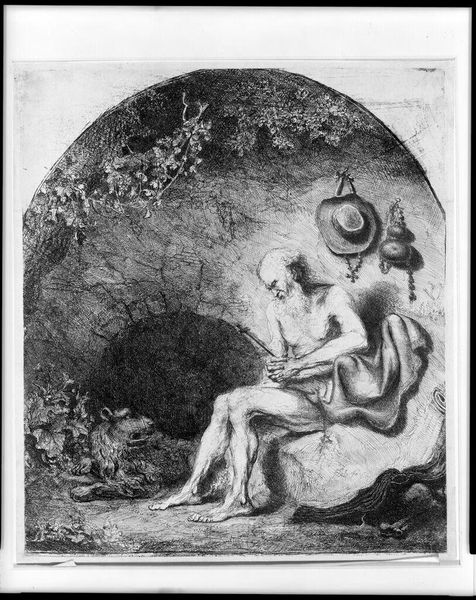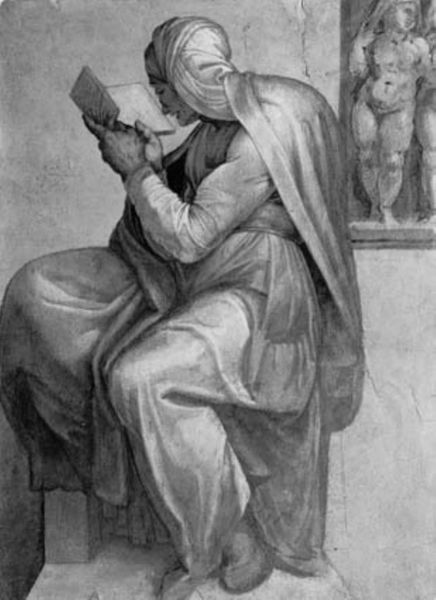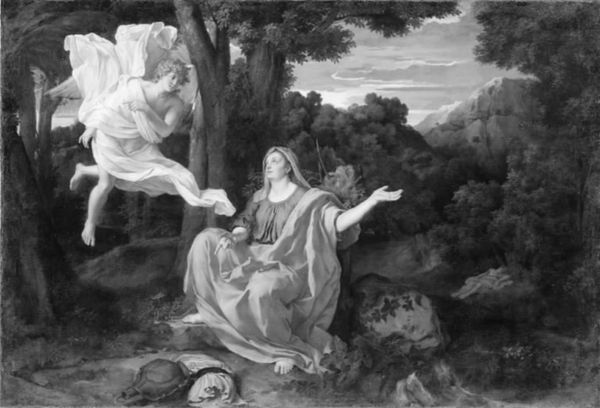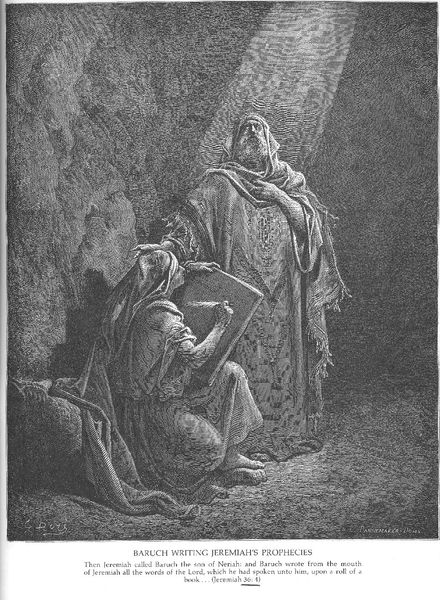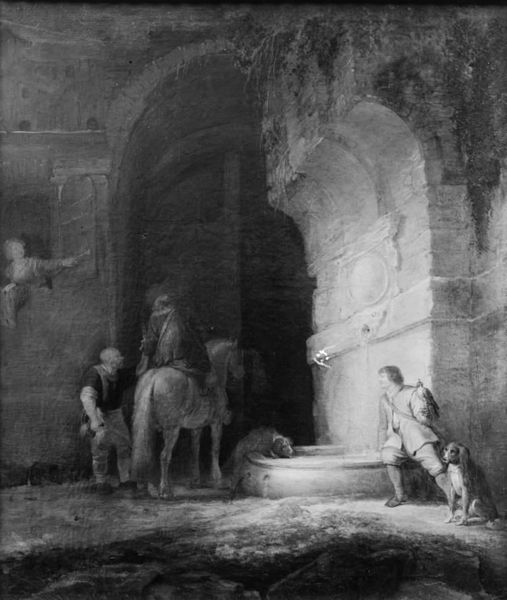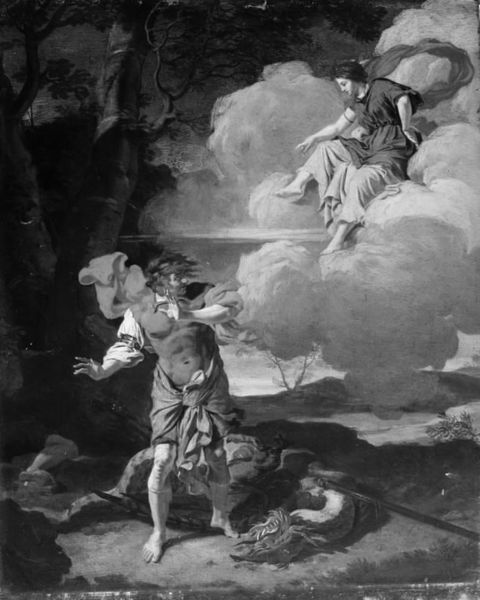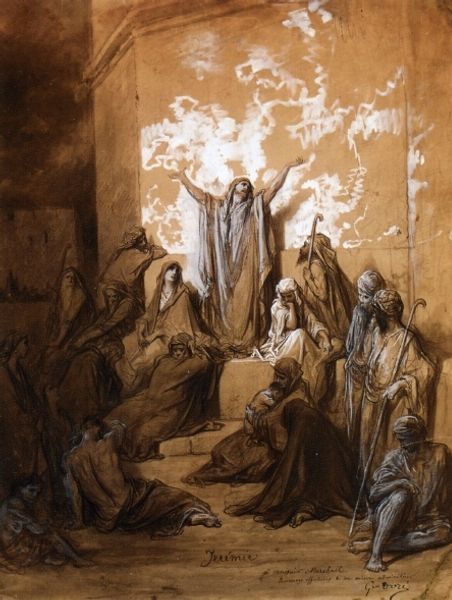
painting
#
baroque
#
painting
#
landscape
#
charcoal drawing
#
figuration
#
history-painting
#
monochrome
#
realism
#
monochrome
Dimensions: 60 cm (height) x 47 cm (width) (Netto)
Jan Adriaensz van Staveren painted Saint Jerome, a 60 by 47 cm oil on panel, sometime in the mid-17th century. The figure of Jerome would have been instantly recognizable to the artist’s contemporaries in the Dutch Republic. He is often shown in or near a ruined building, perhaps referencing his dwelling in the catacombs of Rome, and always with a book, for he was responsible for translating the Bible into Latin. The ruin is important here: the artist and his audience were living in a newly independent nation that had thrown off the yoke of Catholic Spain. Monasteries and churches were desecrated and destroyed. The image of a saint in the ruins could carry multiple meanings for this new Protestant society, both referencing the fallen glory of Rome and the more recent rejection of Catholic rule in the Netherlands. To understand the painting further, we can turn to historical documents to find out more about how the figure of Saint Jerome was used in religious and political contexts, as well as the institutions that supported the arts in the Dutch Republic.
Comments
No comments
Be the first to comment and join the conversation on the ultimate creative platform.

